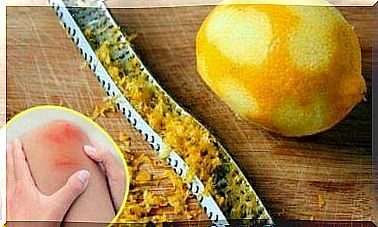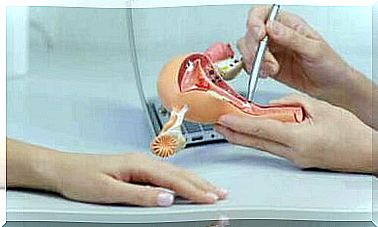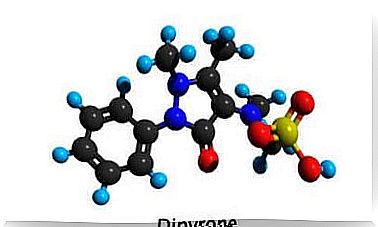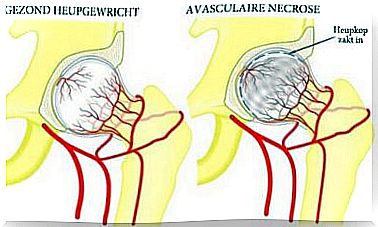The Treatment Of A Tapeworm Infection

Today we are going to talk about the symptoms, causes and treatment of a tapeworm infection. An intestinal infection with a tapeworm is common in people who eat undercooked beef or pork.
According to information published by the World Health Organization (WHO), taeniasis (the medical name for this parasitic disease) causes digestive problems and, in the most severe cases, neurological complications.
How does tapeworm infection occur and what is its treatment? What are the types of tapeworms that infect humans? These and other questions may arise when we talk about this parasite. Below we will take a closer look at the most relevant aspects of this parasite.
Getting the parasite
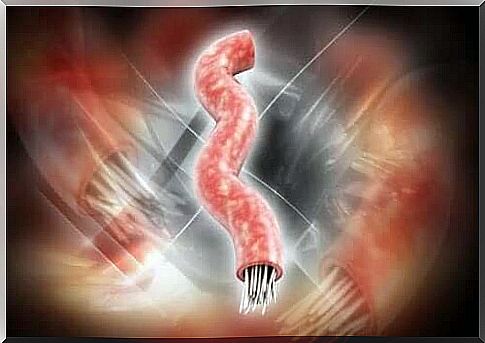
Taenia is a genus of parasitic flatworms in the class of cestodes. They are extracellular endoparasites, as they live inside their host, but they do not work at the cellular level, as is the case with viruses.
They have a complex life cycle and depending on the stage that causes the condition, two diseases can occur in the affected individual.
- Adult tapeworms produce taeniasis when they settle in the last host’s gut.
- The larval and juvenile forms produce cysticercosis, an even more serious condition that occurs when they are in different organs and tissues of the affected person.
In their adult form , tapeworms are in the form of clearly segmented and flattened worms. Inside their head, or scolex, they have a series of hooks that allow them to attach their oral appliance to the patient’s intestinal wall and feed on the food that passes through it.
A complex cycle
According to the Centers for Disease Control and Prevention, the human tapeworm is caused by three species. These types are then:
- Taenia saginata or beef tapeworm.
- Taenia solium or pork tapeworm.
- A species of Asian origin, Taenia asiatica.
It is important to emphasize that humans are the only definitive host for this parasite, unlike many other diseases that are transmitted from animals to humans. To simplify their complex life cycle, we can summarize the steps into three main steps.
- First, an infected human expels eggs or segments of the adult tapeworm in their feces, depositing them on the ground, where they can remain for up to months.
- Pigs and cows can then inadvertently consume these eggs and, over time, the larvae settle in the animals’ tissues, leading to cysticercosis.
- Finally , people ingest this meat infected with young worms and one of them develops in the intestinal tract as an adult and closes the cycle.
Symptoms of a Tapeworm Infection

Most cases of tapeworm infection are asymptomatic. However, some of them cause intestinal inflammation and other complications. The clinical manifestations of taeniasis include:
- Abdominal pain and loss of appetite.
- Gradual weight loss with no apparent explanation.
- General stomach upset.
These symptoms do not appear until the parasite is large. Unless a doctor does a stool culture (where they can see the eggs of the adult tapeworm), an infected patient can have a tapeworm for years without realizing it.
However, the case of cysticercosis is quite different. In fact, this is a condition caused only by Taenia solium. In this case, humans are not infected by eating meat with the larvae, but by directly ingesting the eggs.
The parasite thus mistakes the human for the intermediate host (pig or cow) and causes cysticercosis or an invasion of larvae in the tissues, in the human body. However, we should note that this is not the natural cycle of tapeworms.
In addition, the clinical signs differ greatly depending on the tissues affected. However, when the larvae settle in the brain, neurological symptoms are decisive in detecting the disease. These include:
- Constant and severe headache
- Epileptic attacks
- disorientation
- Amnesia
Prevention and treatment of a tapeworm infection
You can treat both cysticercosis and taeniasis with antiparasitic medications. Especially in the case of taeniasis, the prognosis is very positive. However, cysticercosis sometimes requires surgery and, if left untreated, can be fatal.
The best prevention, as in almost all cases, is good hygiene and food safety. That is why intestinal parasites are so rare in high-income countries: the food is strictly controlled and they avoid the sale of meat with cysticercosis.
